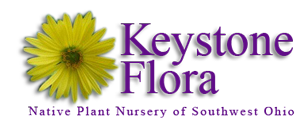Planting Milkweed
Milkweeds are the host plants for the Monarch butterfly. They are great nectar plants for bees, butterflies, and many other beneficial insects.The more sun the better when planting milkweeds.Milkweed appears late in spring. It does not like cold and will wait until the threat of frost is gone. The milkweeds we sell are available later in Spring. We don’t push our plants in a greenhouse so our plants arise naturally with the change of the season. This results in a stronger individual. Please be patient and be careful when Spring weeding around where your milkweeds were planted last year.
Asclepias incarnata “Swamp Milkweed” (pictured below) prefers moist soil. Look for a moist spot in your landscape. You can create moist conditions by sculpting a portion of an area a few inches below the surface. Rain and moisture will gravitate and provide a more favorable condition. With regular watering this plant will tolerate a drier location.
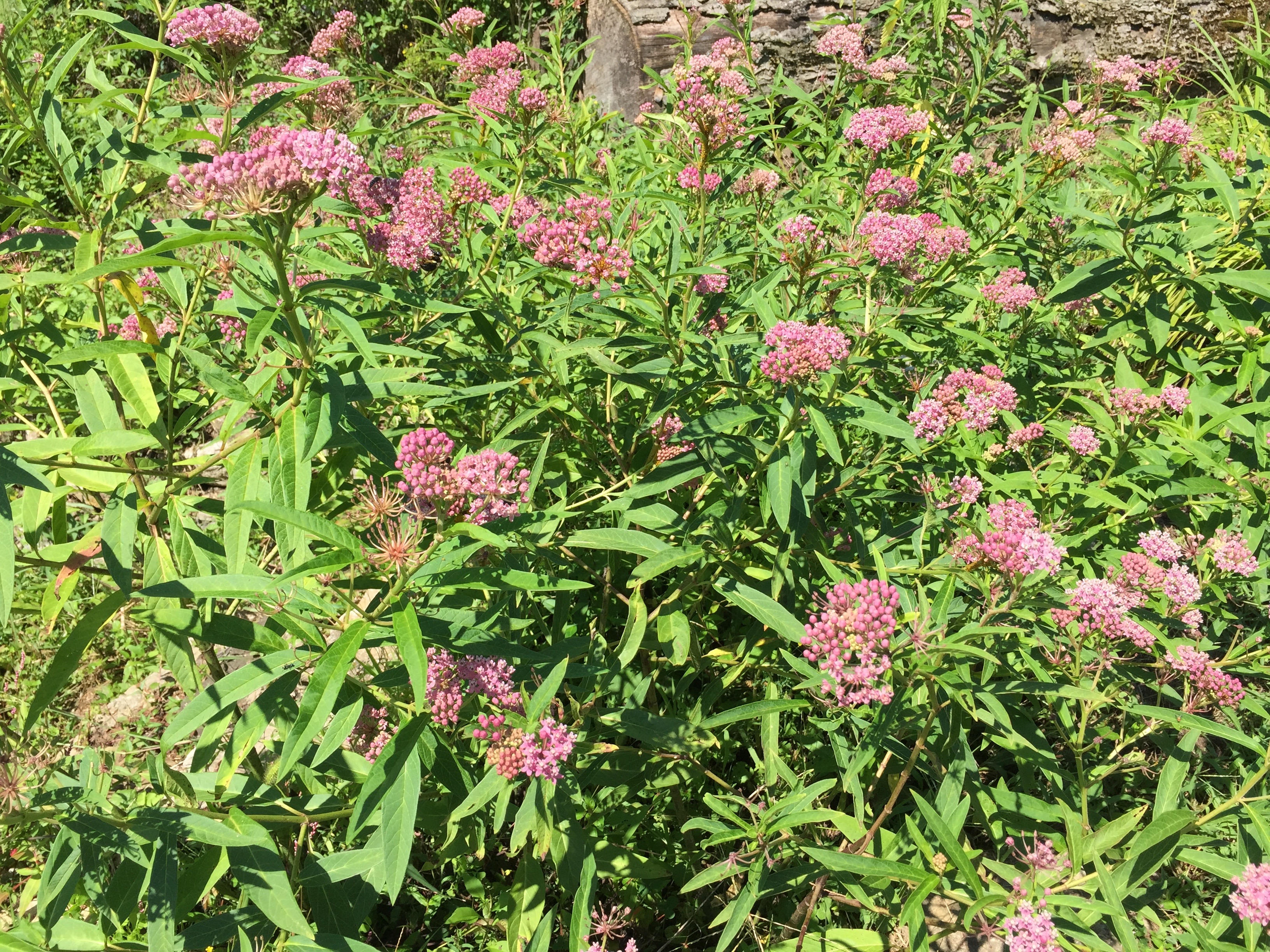 Asclepias tuberosa “Butterfly Weed” (pictured below). A well drained root zone is recommended. With our clay soil we add a healthy amount of coarse sand and compost to the root zone. They have done well planted on mounds. A slope may also be beneficial.
Asclepias tuberosa “Butterfly Weed” (pictured below). A well drained root zone is recommended. With our clay soil we add a healthy amount of coarse sand and compost to the root zone. They have done well planted on mounds. A slope may also be beneficial.
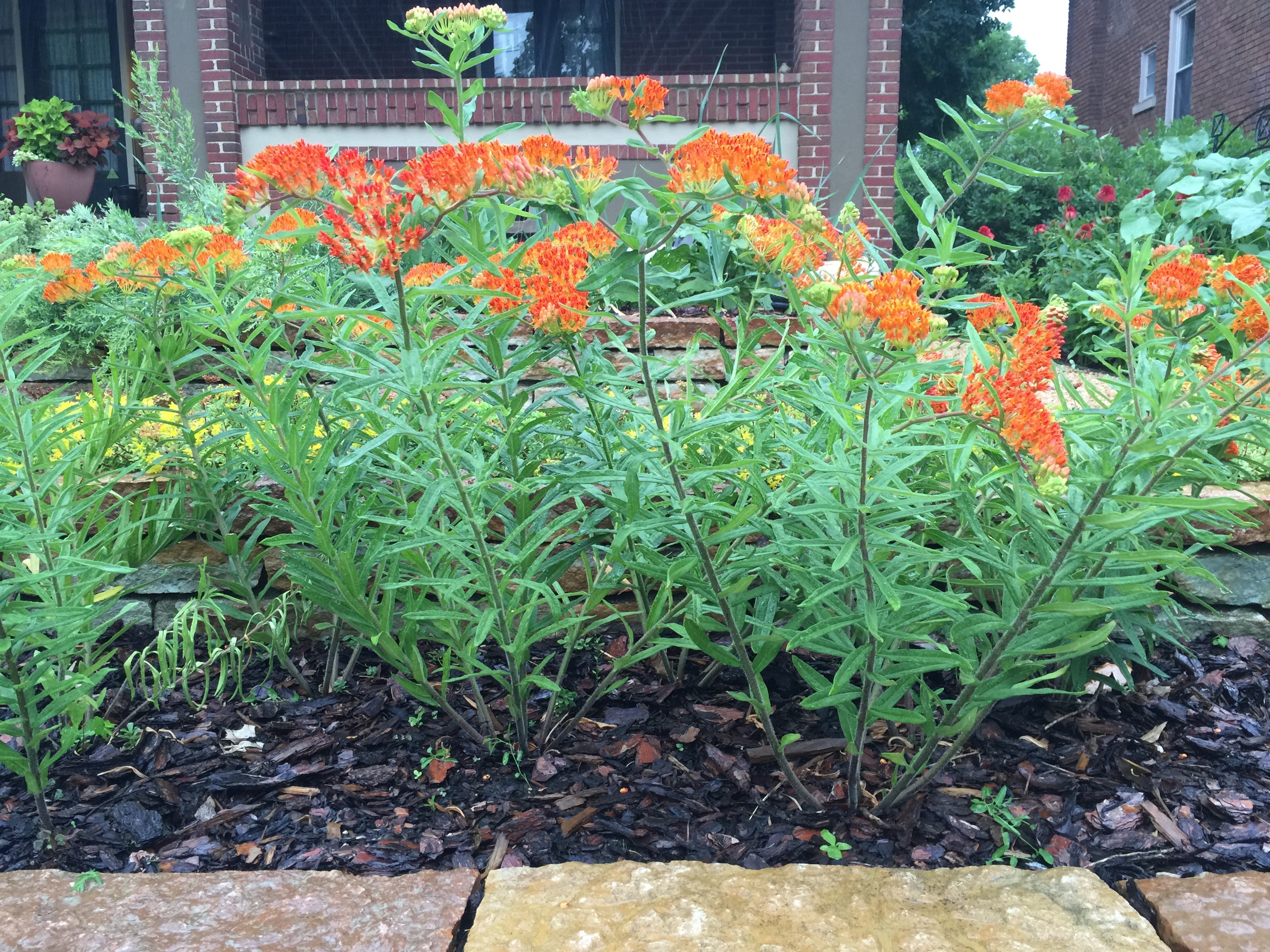

Asclepias syriaca “Common Milkweed” (pictured below). This species will spread in your garden with underground rhizomes aggressively. Beware! Weeks of wonderful perfume from the flowers will grace your yard with this species. A pollinator attractor at its best.
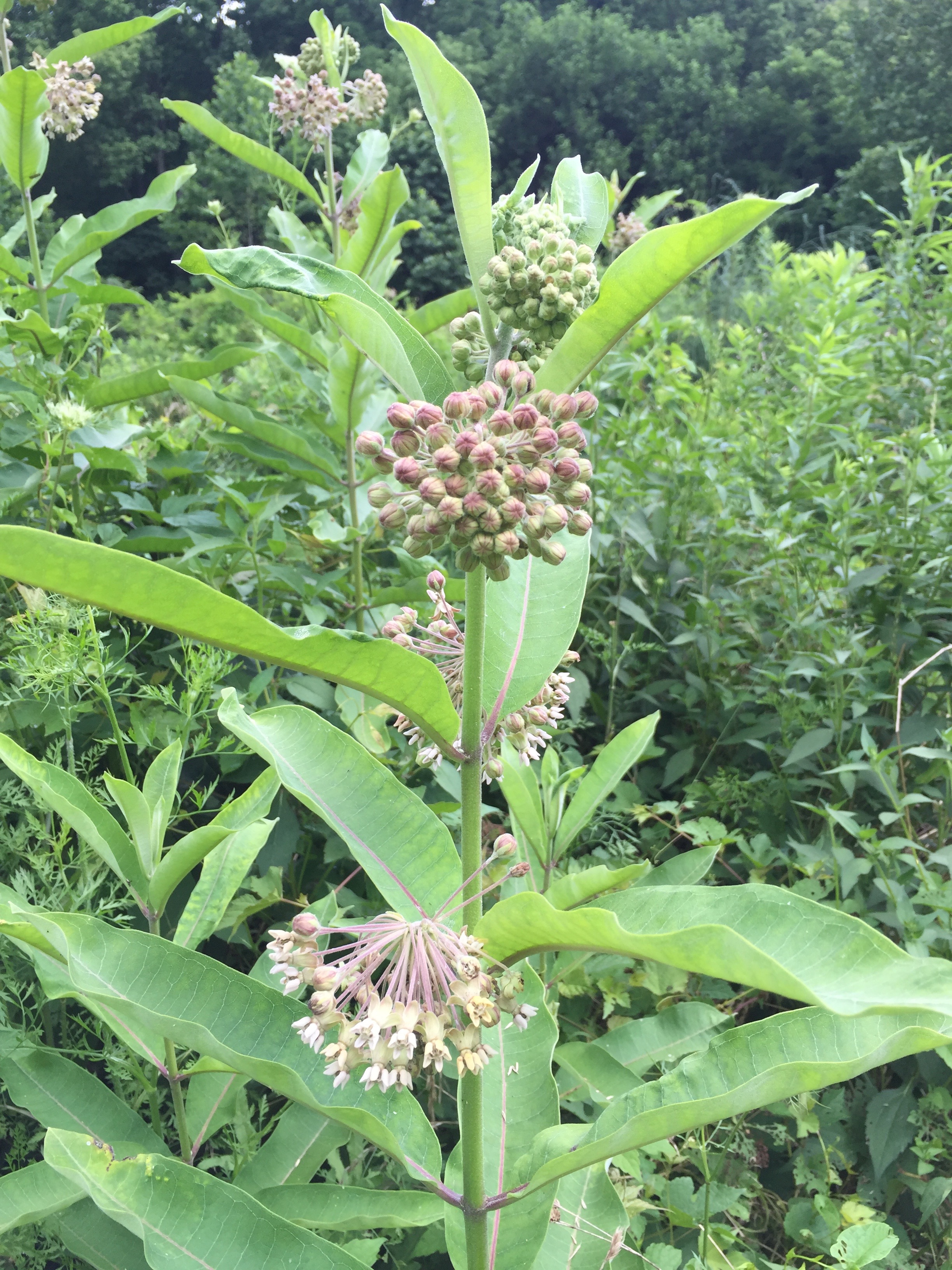
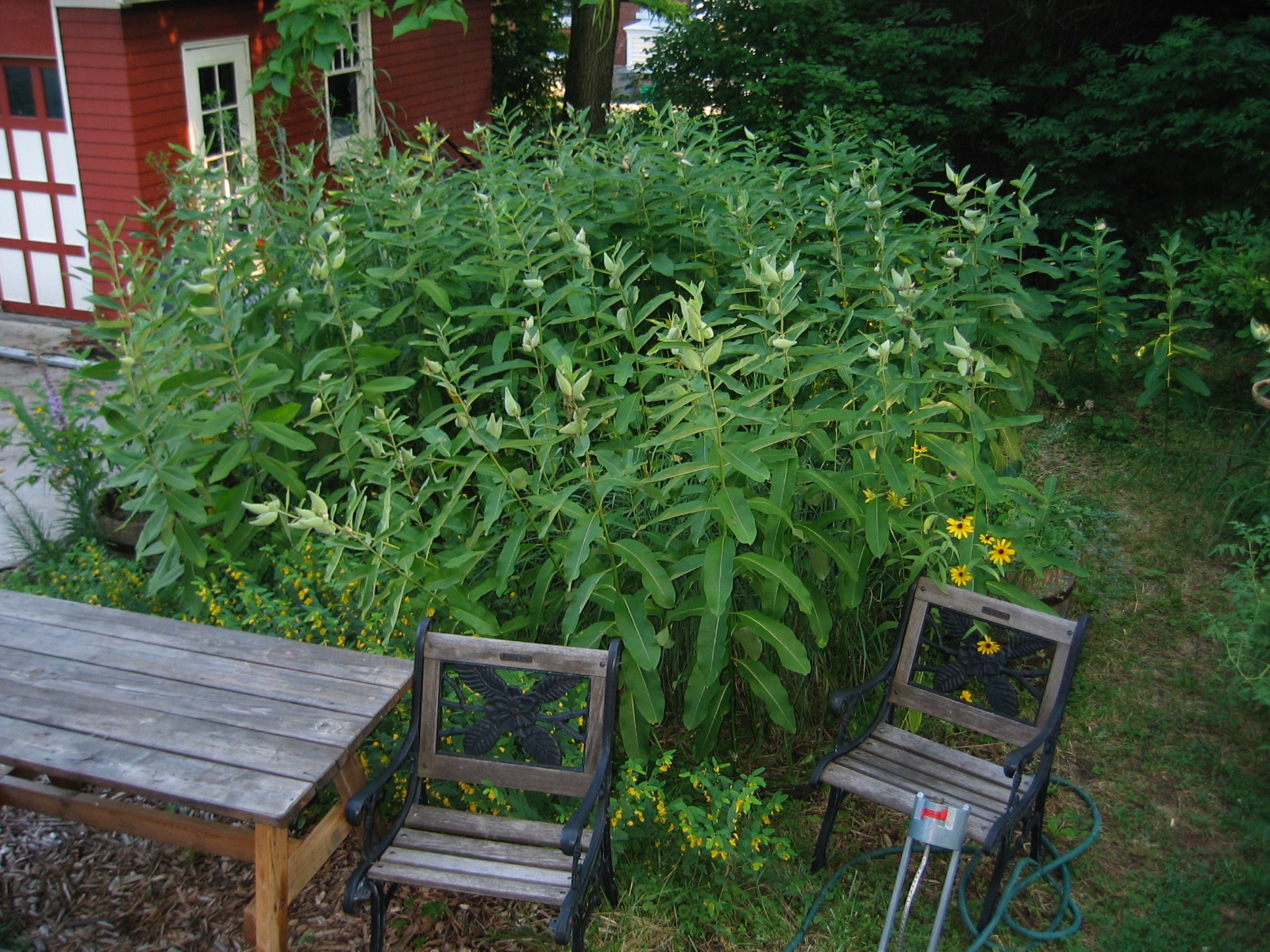
We are propagating other native milkweed species, please check with us in late spring to hear about our progress
Asclepias curassavica, (not pictured) commonly known as tropical milkweed has been identified as a threat to our monarchs. In the south, monarchs will tend not to migrate to Mexico if curassavica is available. Over wintering milkweed can host a protozoan parasite called Ophryocystis electroscirrha (OE). Monarch caterpillars ingest the parasite from the leaves, resulting in a spore covered hatchling after metamorphosis.
The parasite weakens the monarch and shortens their life. Contact with other migrating monarchs can spread the parasite.
Let’s avoid planting tropical milkweed.
Keystone Flora sells only local milkweed species.
Buddleja, Buddleia, or Buddlea “Butterfly Bush” (not pictured) is a genus of over 100 species endemic to Asia. We don’t grow this plant and it has become an invasive noxious weed in the west. It does attract butterflies. We prefer native plants, the ones that butterflies have evolved with that support their life cycle.
